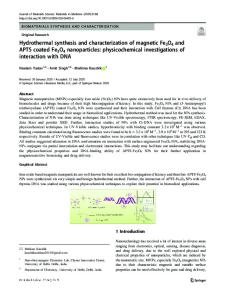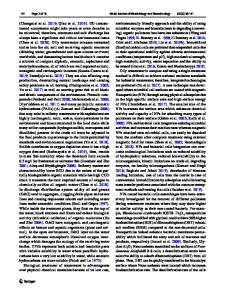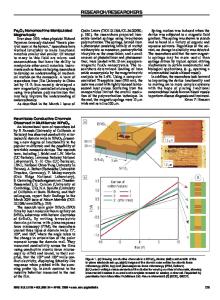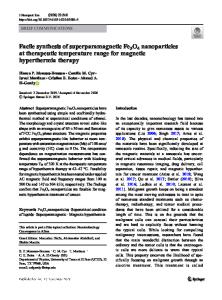Thermal stability of magnetite (Fe 3 O 4 ) nanoparticles
- PDF / 529,541 Bytes
- 7 Pages / 595 x 842 pts (A4) Page_size
- 42 Downloads / 389 Views
1118-K03-09
Thermal stability of magnetite (Fe3O4) nanoparticles B.H. Ong1,*, N. K. Devaraj1, M. Matsumoto1 and M. H. Abdullah2 1
Faculty of Engineering, Multimedia University, Cyberjaya, Selangor, Malaysia Faculty of Science and Technology, National University of Malaysia, Bangi, Selangor, Malaysia 2
* Email of corresponding author: [email protected]
ABSTRACT Magnetite (Fe3O4) nanoparticles are prime candidates for biomedical applications due to their biocompatibility and good magnetic properties. However, magnetite is highly susceptible to oxidation when exposed to the atmosphere. In order to preserve their properties, it is important for the particles to maintain their magnetite phase. In this study, magnetite nanoparticles were prepared using the conventional co-precipitation of ferrous (Fe2+) and ferric (Fe3+) chloride salt solutions with sodium hydroxide (NaOH). Thermogravimetric analysis (TGA) was subsequently carried out to identify the transition temperatures. Energy Dispersive X-Ray (EDX) spectrum shows the presence of impurities, such as sodium (Na) and chloride (Cl) ions in the as-synthesized magnetite nanoparticles. The as-synthesized samples were then calcined in a chamber furnace according to TGA data. The calcined samples were next characterised by X-ray Powder Diffraction (XRD), Transmission Electron Microscopy (TEM) and Vibrating Sample Magnetometer (VSM) to determine the changes in phase and magnetic properties of the nanoparticles as a function of different calcination temperatures. INTRODUCTION Iron oxides are widespread in nature and can be easily synthesized in a chemical laboratory. Besides being non-toxic, they also have good electrical, electronics and magnetic properties. Various scientific disciplines such as biology, geology, environmental chemistry, soil science, medicine and mineralogy have taken active interest in the research and application of iron oxides. Some of the different phases of iron oxides include goethite (αFeOOH), wustite (FeO), hematite (α-Fe2O3), maghemite (γ-Fe2O3) and magnetite (Fe3O4) [1]. Of all the phases of iron oxides, bulk magnetite has the highest saturation magnetization (Ms = 92-100 emu/g) followed by maghemite (Ms = 60-80 emu/g) [2]. Both magnetite and maghemite are ferrimagnetic materials [2] and have similar inverse spinel crystal structures [3]. Discrete magnetic nanoparticles are candidates for numerous applications such as multi-terabit in-2 magnetic storage devices, magnetic refrigeration systems, ferrofluids, catalysts, contrast enhancement agents in magnetic resonance imaging (MRI) [4], site specific drug-delivery and also hyperthermia agents [5]. For biomedical applications such as MRI, drug-delivery and hyperthermia, the nanoparticles have to be biocompatible, have a large enough moment for targeting [2] and display superparamagnetic behaviour [5].Owing to their non-toxicity and strong magnetic susceptibilty [6], magnetite and maghemite nanoparticles have been extensively researched for biomedical applications. Below a certain size (15 nm for m
Data Loading...











